As nature enthusiasts who share a passion for travel. And we’ve always believed that weather is never a hindrance when one loves driving and the other enjoys photography. This year, we decided to visit Sattal in December. A destination that had been on our bucket list for some time. Located just a six-and-a-half-hour drive from Delhi. Sattal is in the Kumaon hills of Uttarakhand. And offering a tranquil escape into nature, especially during the serene winter months.
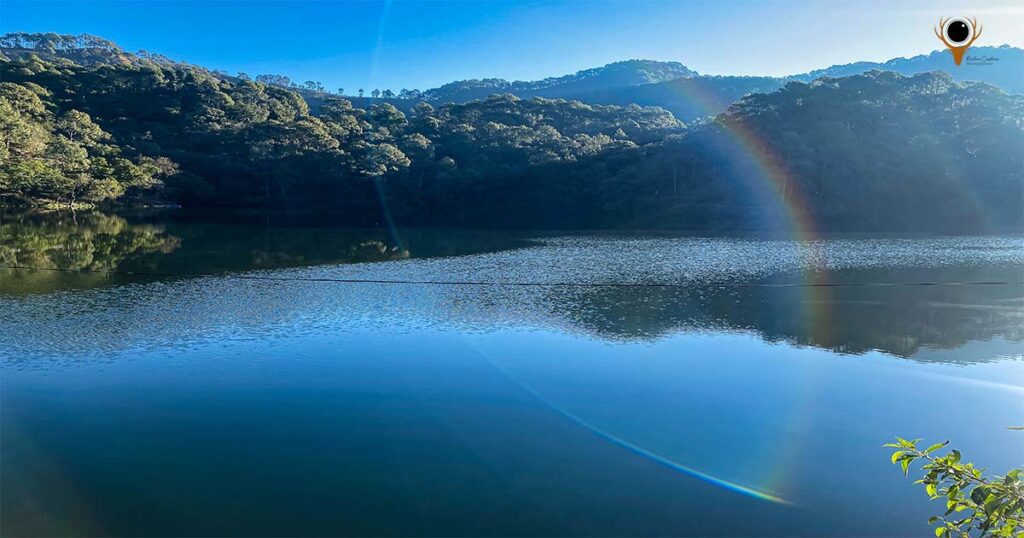
Sattal, meaning “seven lakes,” is a hidden gem . That captivates nature lovers, birdwatchers, and photographers seeking respite from the hustle and bustle of city life. The area is not only a sanctuary for those who crave peace and solitude, but it also offers exceptional birdwatching opportunities. And particularly in the winter when migratory birds flock to the region.
Sattal : A Scenic Journey
The drive to Sattal is relatively straightforward, thanks to well-maintained roads that make it easily accessible by car. Several bus services also run along this route, providing other convenient travel options. We embarked on our journey by car , taking in the scenic views of lush green landscapes and charming hill towns along the way. The road itself, winding through picturesque villages and forests, sets the perfect tone for the tranquil experience that awaits us in Sattal.
A Tapestry of Seven Lakes
Sattal’s beauty lies not only in its serene landscapes but also in the seven distinct lakes that dot the region: Purna Tal, Ram Tal, Sita Tal, Laxman Tal, Nal Damyanti Tal, Sukh Tal, and Garud Tal. Each lake offers its unique charm and adds to the allure of the area. Hindu epics derives the names of these lakes. Like the Ramayana and the Mahabharata, which lend a sense of historical and cultural richness to the landscape.
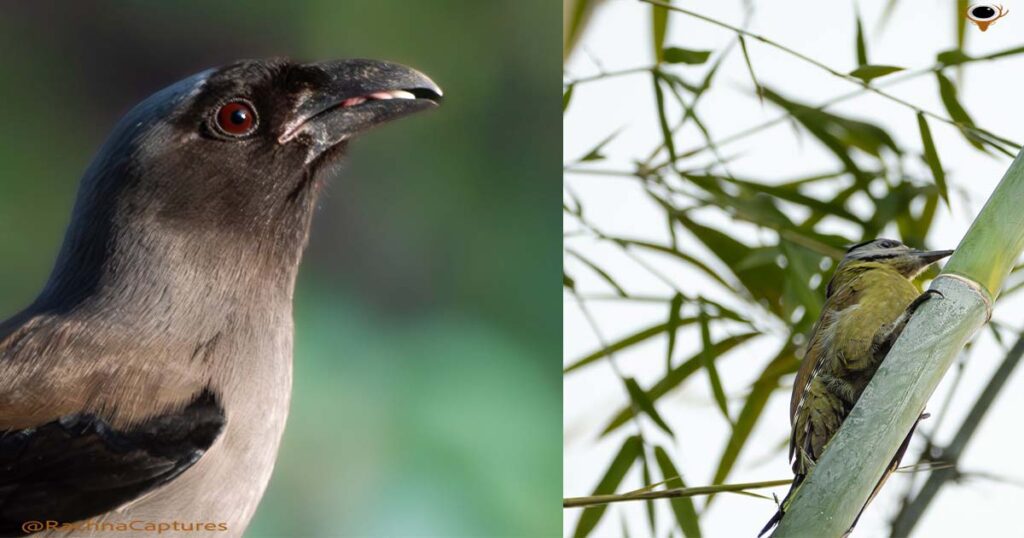
Whispers of Wings
Winter transforms Sattal into a peaceful wonderland. The crisp air and clear skies create a magical atmosphere, with fewer tourists around to disturb the silence. This makes it an ideal time for those seeking a quiet retreat or indulging in birdwatching.
Sattal’s diverse ecosystem is home to a variety of bird species, and the winter months offer a unique opportunity to observe migratory birds that visit the area. The clear winter air enhances visibility, making bird spotting easier and more rewarding.
We were fortunate to be staying in a homestay surrounded by nature, far from the usual tourist crowds. The surrounding forests provided a peaceful setting, perfect for enjoying the sights and sounds of local wildlife.

Sunshine Magic: A Morning with Birds at Sattal
Our days in Sattal began with tea and the cheerful chirping of birds, although the sky was initially cloudy. As the sun broke through the clouds, we got ready for breakfast. The sound of something tapping on our glass window soon diverted our attention. To our delight, a White-Crested Laughing Thrush was pecking at the window, as if it were inviting us into its world. According to our bird guide, these birds visit regularly during the winter months, and he shared many fascinating facts about the local avian residents.
We were particularly curious about how birds see the world, and the answer was eye-opening.
1. Birds, like humans, have five senses, but some of their senses are even more developed than ours. For example, birds have more light receptor cells than humans, which allows some species to see ultraviolet light. This ability helps them identify potential mates.
2. Birds of prey, such as buzzards, have forward-facing eyes with eight times as many photoreceptors as humans. And giving them excellent binocular vision, which is crucial for hunting.
3. On the other hand, birds like pigeons and ducks have eyes on the sides of their heads. Which allows them to see nearly 320 degrees around them without turning their heads.
As we enjoyed these insights .a crimson sunbird, camouflaged by the red flowers it was feeding on. Its acrobatic movements as it sipped nectar were a true spectacle.
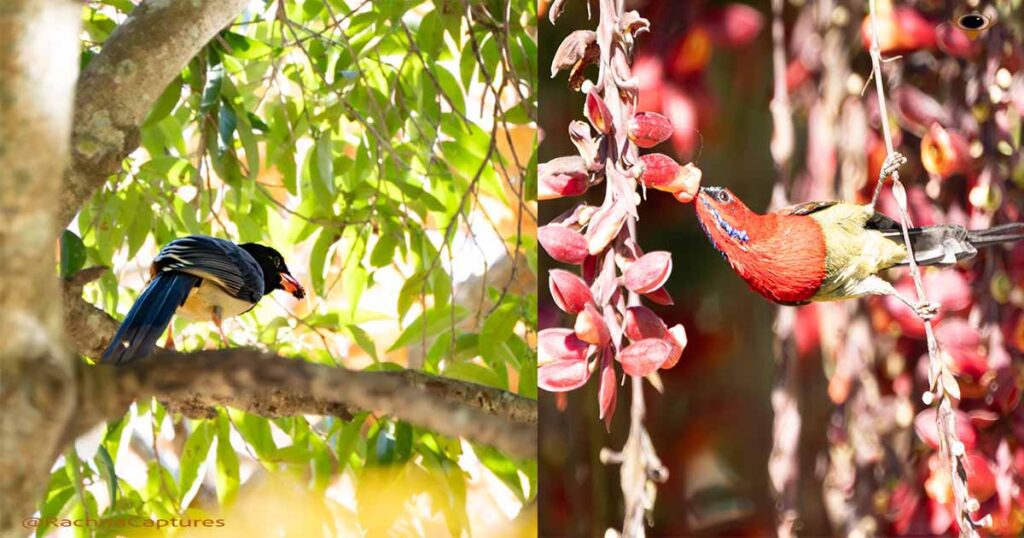
The Magic of the Sattal Lake
Later, we took a leisurely stroll toward Sattal Lake, which was only a short walk from our homestay. The road leading to the lake was a treasure trove of birdlife. As we walked, we encountered a variety of species, from the elusive Spotted Forktail to the striking Blue Whistling Thrush. The serene, undisturbed atmosphere of the lake allowed us to appreciate the beauty of nature in its purest form.
The clear blue and green hues of the lake were breathtaking, and we were fortunate enough to spot a pair of Red-Billed Magpies hopping from tree to tree in search of nectar. With no other tourists around, the silence added to the peacefulness of the experience.
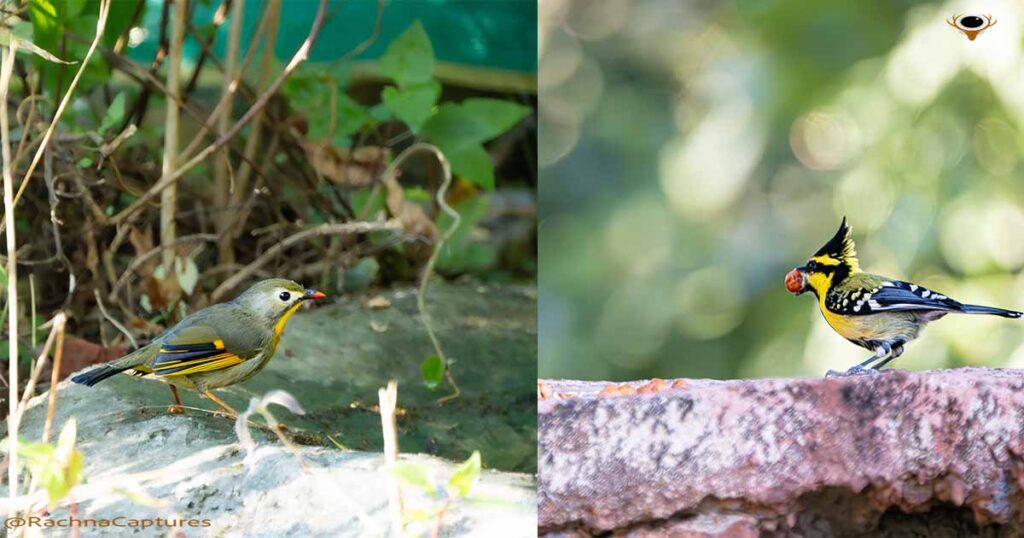
Afternoon Delights
In the afternoon, we explored the area around our homestay. Patience and luck are key when it comes to photographing birds, and we were fortunate to capture some stunning shots. A small water bath near the homestay attracted a variety of birds, including the Red-billed Leiothrix, Indian White-Eye, Himalayan Bulbul, and Grey Bushchat. As we sat quietly, more birds appeared, including a family of White-Throated Laughing Thrushes that came to feast on the grains we had placed.
The following morning, we were greeted by the distinctive “tuk-tuk” sound. Which is of a Lesser Yellow-Nape Woodpecker, which we managed to spot high in the trees.
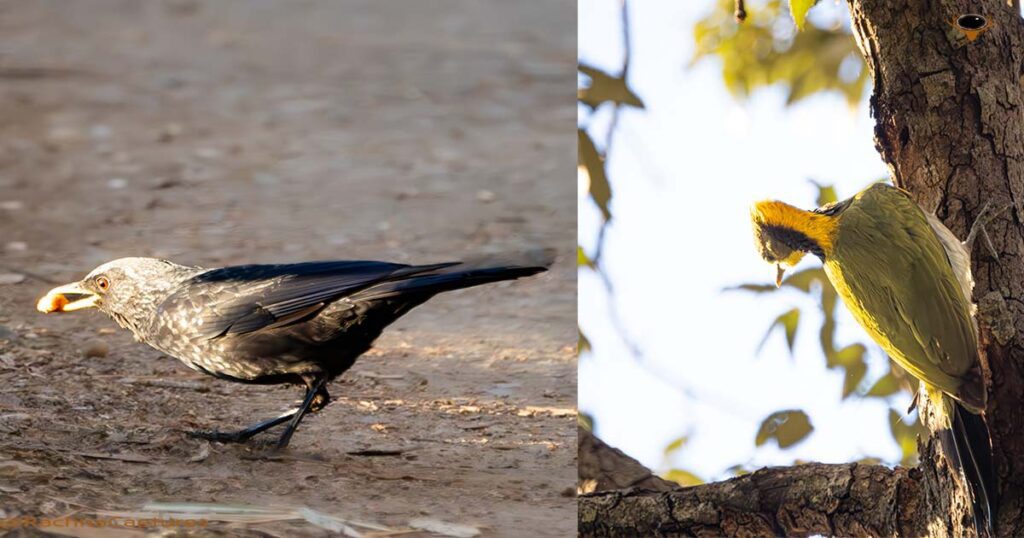
Preserving Sattal Natural Beauty
Villagers living near Sattal or other Uttarakhand are used to seeing birdwatchers with their cameras. And they are incredibly friendly and welcoming. After our walk, we stopped at a nearby stall for tea. Where the sugar was substituted with jaggery. A refreshing change that complemented the hot, soothing beverage perfectly.
As we reflected on our experience, we were reminded of the importance of responsible tourism. While it’s easy to get caught up in the beauty of Sattal, it’s equally important to respect its environment and follow sustainable practices to ensure that future generations can also enjoy this hidden paradise. Despite visiting Sattal several times over the years, we always find ourselves longing to return, especially during the winter and spring months, when nature is at its most captivating.
Winter is the season of hope because it reminds us that spring is just around the corner
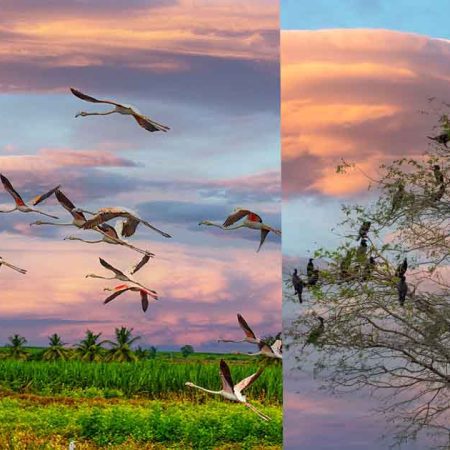


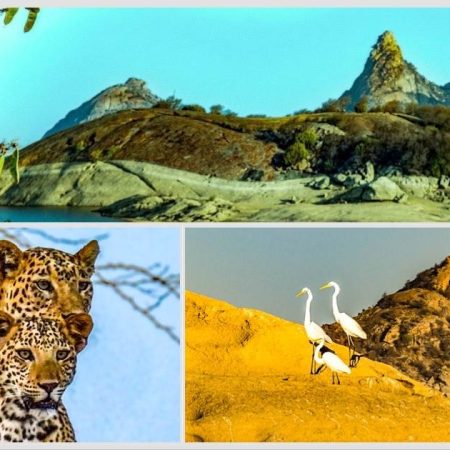
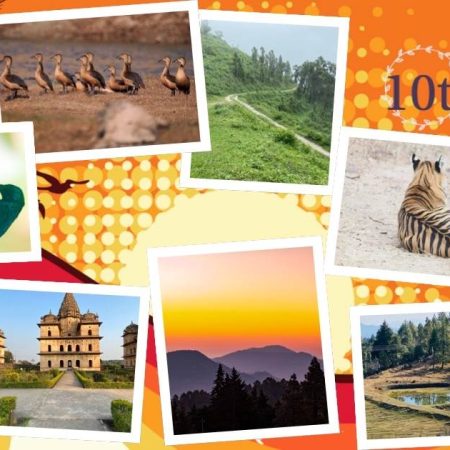
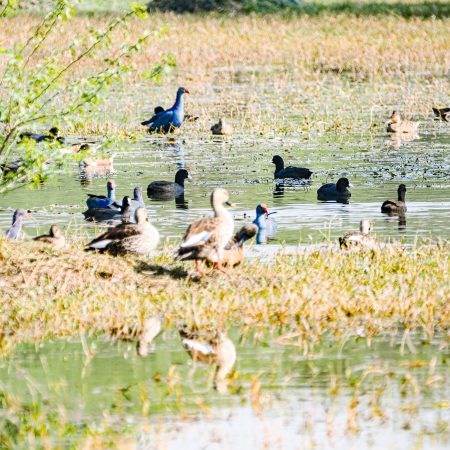
10 Comments
Great insightful blog! Definitely tempted to visit this place.
I was visually transported to Sattal. A vivid blog that makes you want to experience the tranquillity of the place as you are one with nature!!! Definitely got added to my bucket list!!
Beautifully narrated, awesome captures, love to visit again & again
Through your lens, Rachna, Sattal’s breathtaking beauty unfolds like a vibrant tapestry, weaving together the threads of nature’s finest artistry. Your captivating photographs paint a mesmerizing portrait of this Himalayan jewel, inviting viewers to lose themselves in the lush forests, serene lakes, and diverse avian life that call this paradise home.With each click of your shutter, you breathe life into Sattal’s hidden wonders, transforming fleeting moments into timeless masterpieces. Your images dance with light and shadow, revealing the delicate interplay between flora and fauna, and showcasing the raw, untamed spirit of this unique ecosystem.
As nature enthusiasts and birdwatchers, we find ourselves irresistibly drawn to the world you’ve unveiled. Your photography serves as a siren call, beckoning us to embark on our own Sattal adventures, to witness firsthand the majesty you’ve so skillfully captured. For those unable to make the journey, your work offers a virtual passage, allowing them to soar on the wings of imagination through Sattal’s pristine wilderness.
But beyond mere aesthetics, your art speaks volumes about the importance of conservation. Each frame serves as a poignant reminder of what stands to be lost if we fail to protect these natural sanctuaries. Your photography ignites a spark of stewardship in the hearts of viewers, inspiring us to cherish and safeguard the delicate balance of life in Sattal and beyond.
Kudos to you, Rachna, for your artistry and vision. Your dedication to capturing Sattal’s essence not only delights the senses but also nurtures a profound appreciation for the natural world. Cheers to the magic you’ve shared and the countless souls you’ve touched through your remarkable work!
Such a refreshing wintery blog. Loved it!
Absolutely loved the blog post!! The pictures are stunning
Really amazing clicks of the hidden treasures of nature and as nicely summarised in blog , We all need to preserve and nurture these wonders of nature..
Beautiful capture of the birds and a vivid description of Sattaal lake …..really the hills are best in winters …..the photo of crimson sunbird is ultimate
Beauty lies in the eyes of beholder.. thank u for capturing nature in its myriad forms and sharing with us your experience thru colourful pics and interesting write up….
Minute details of trip are covered. Will be og great help to person visiting The place.
Got to see place with bloggers eye, amazing